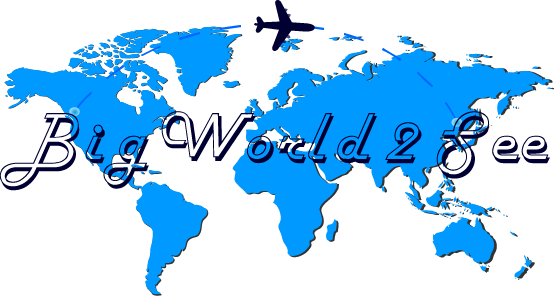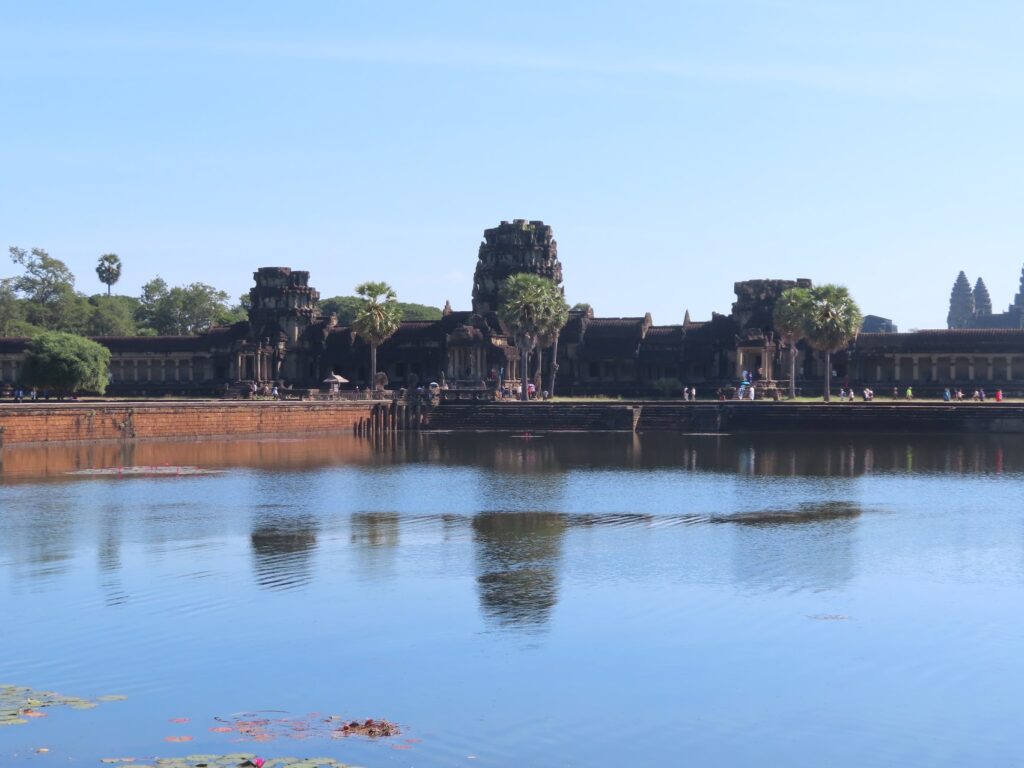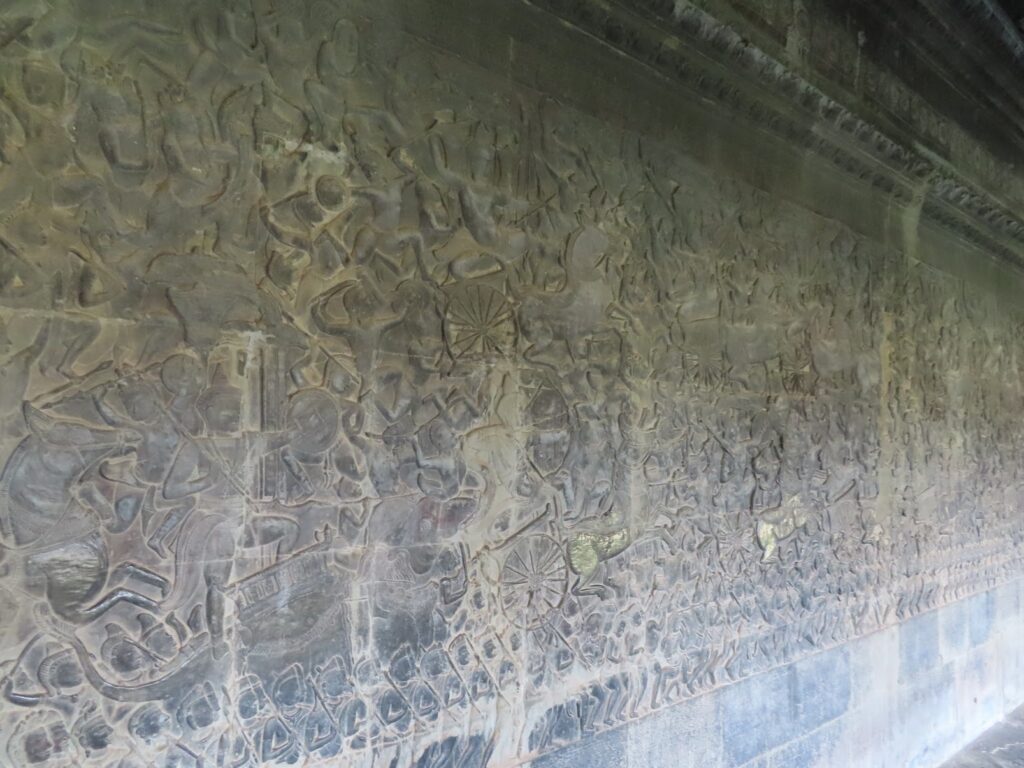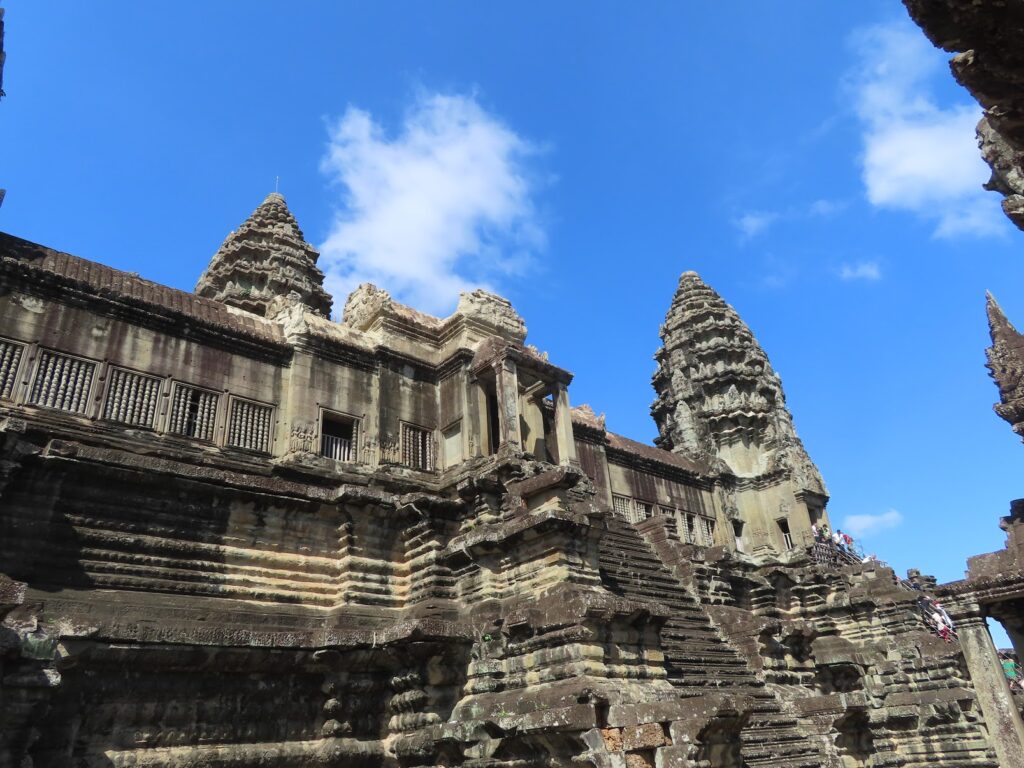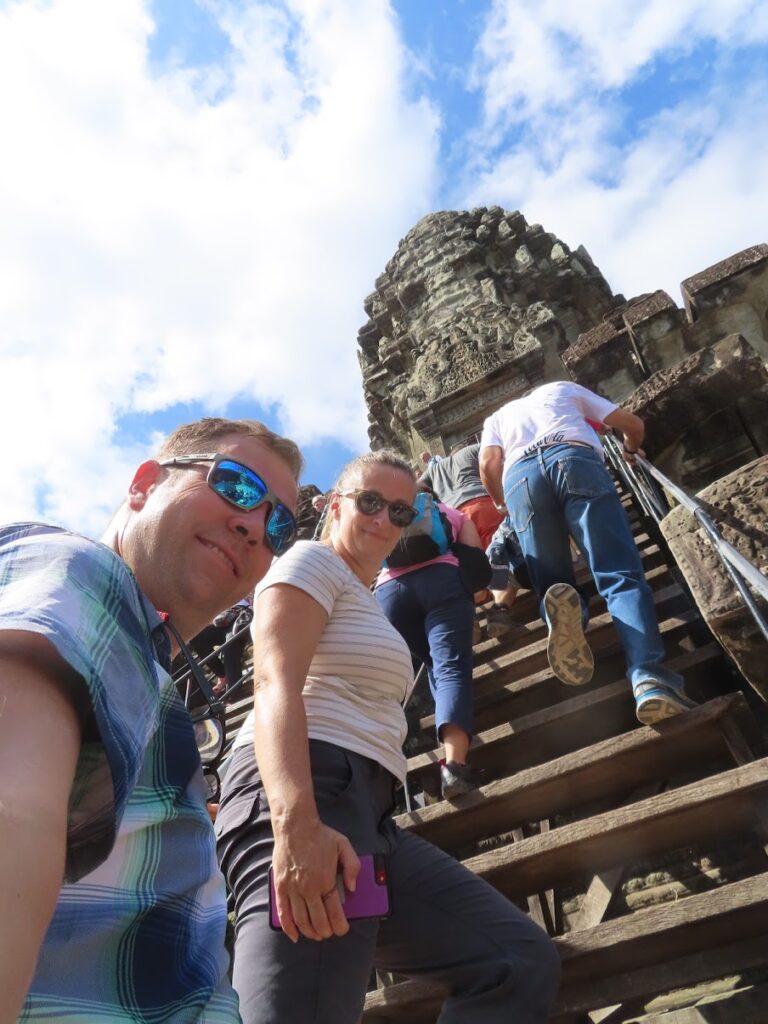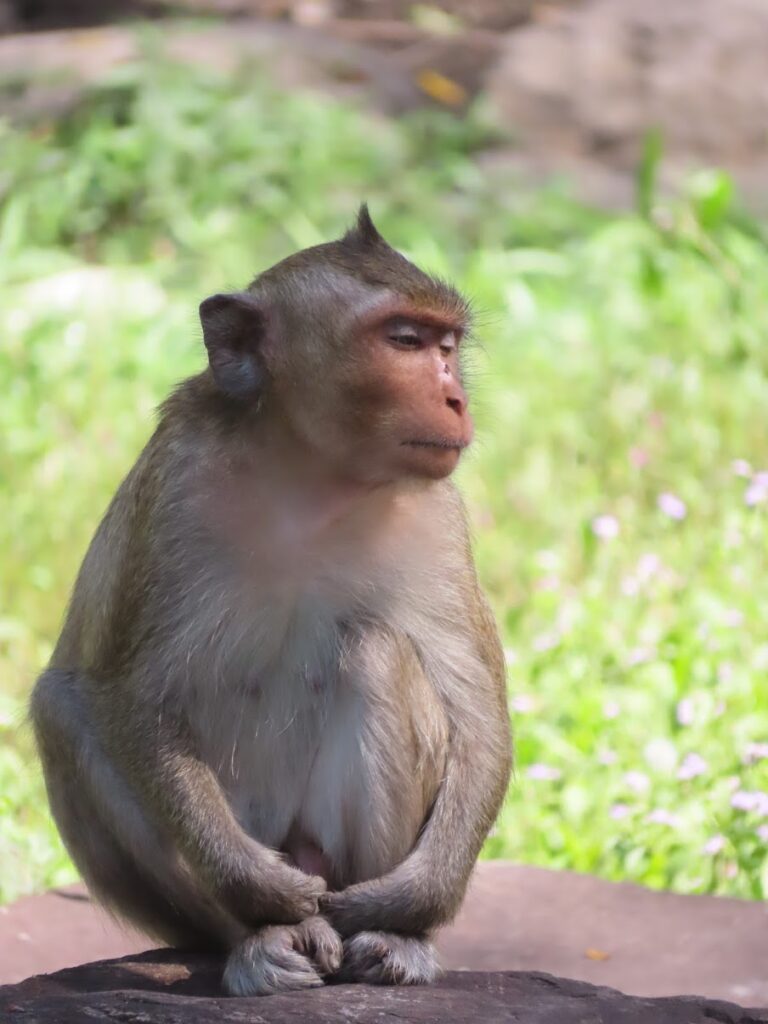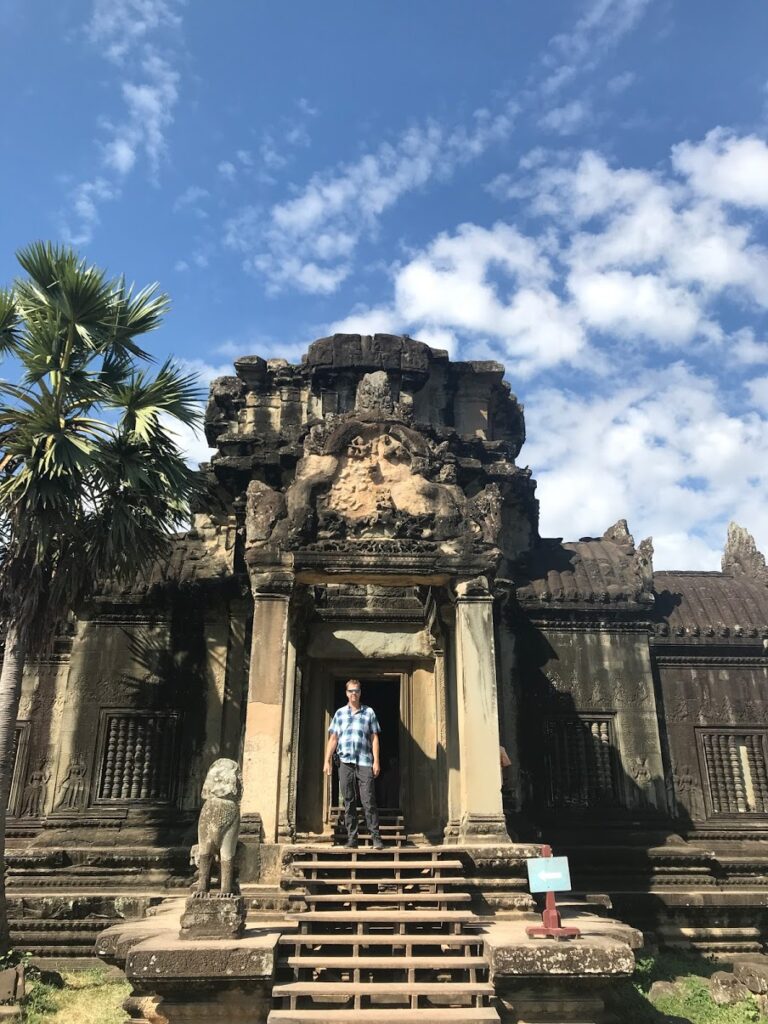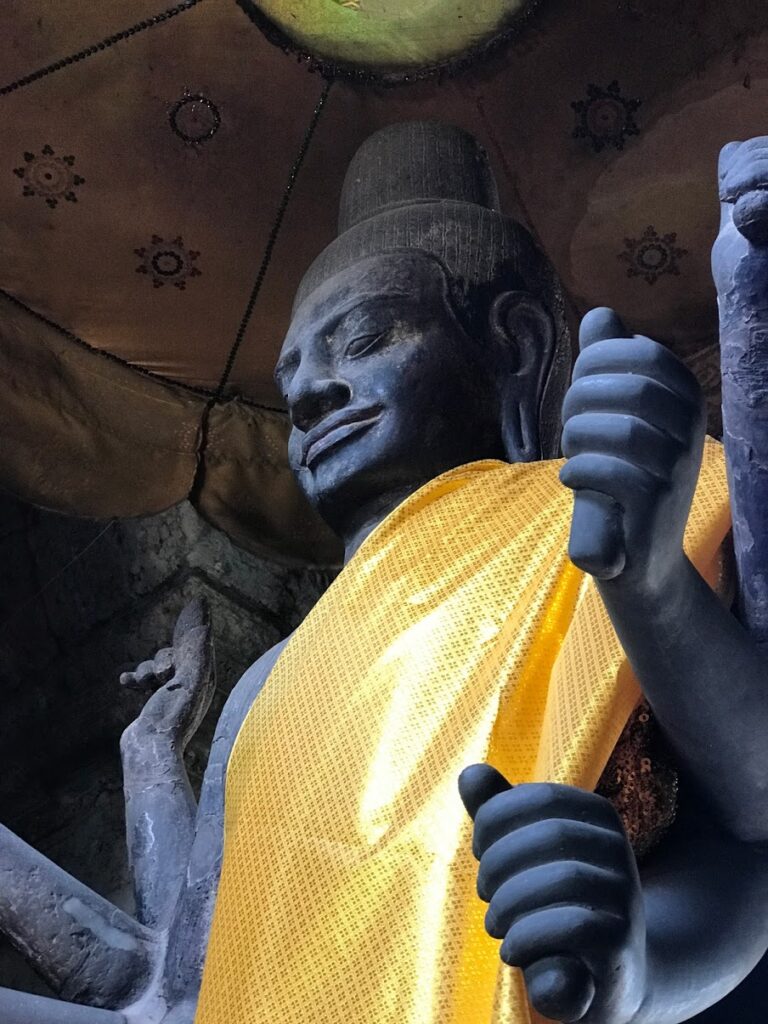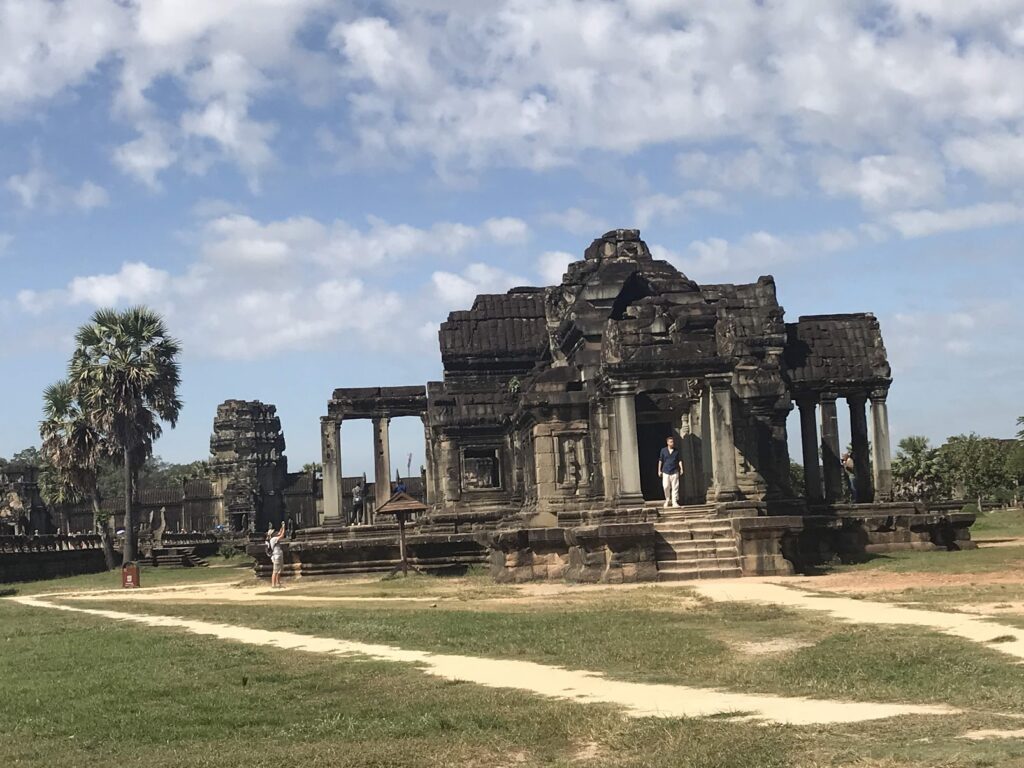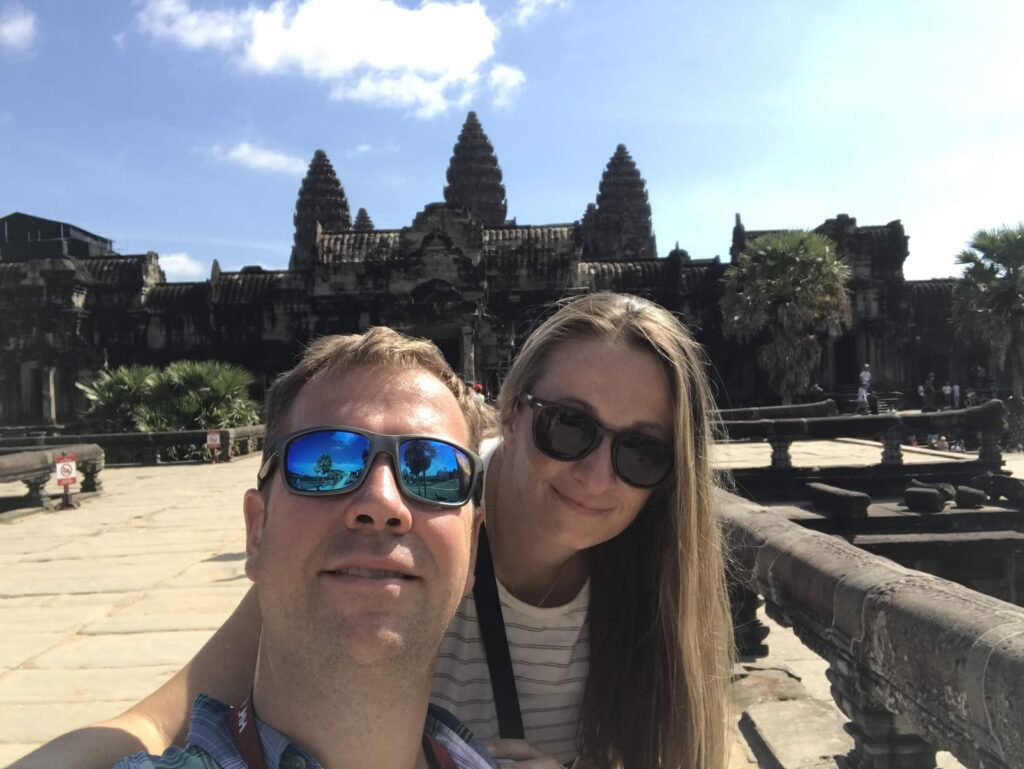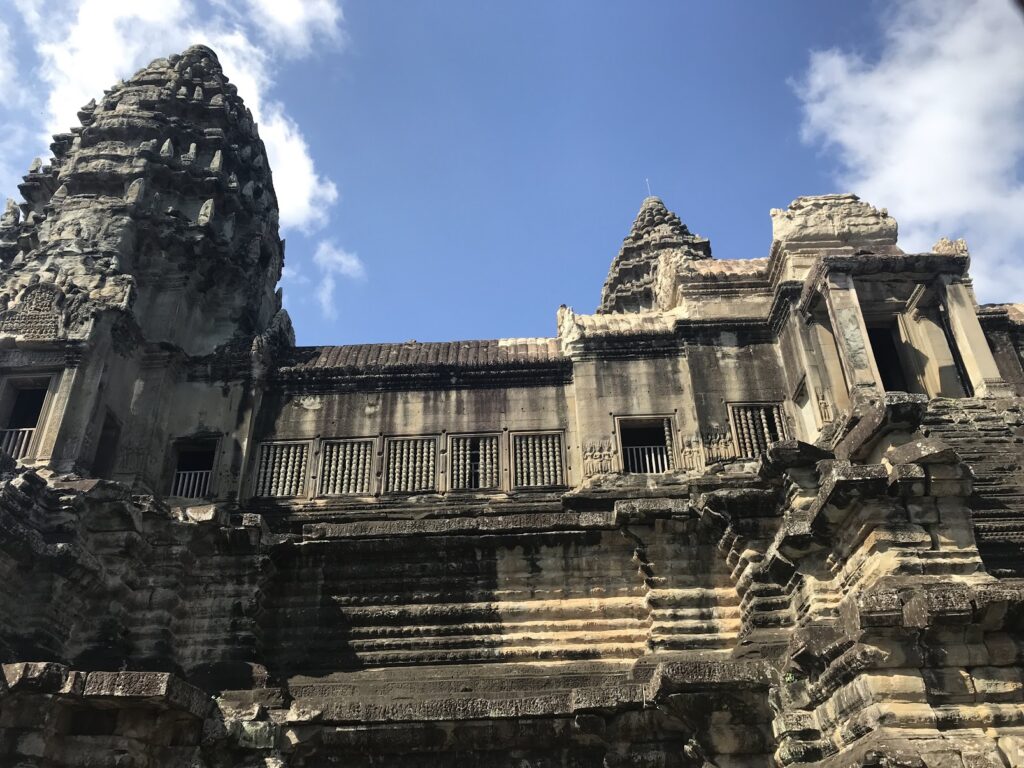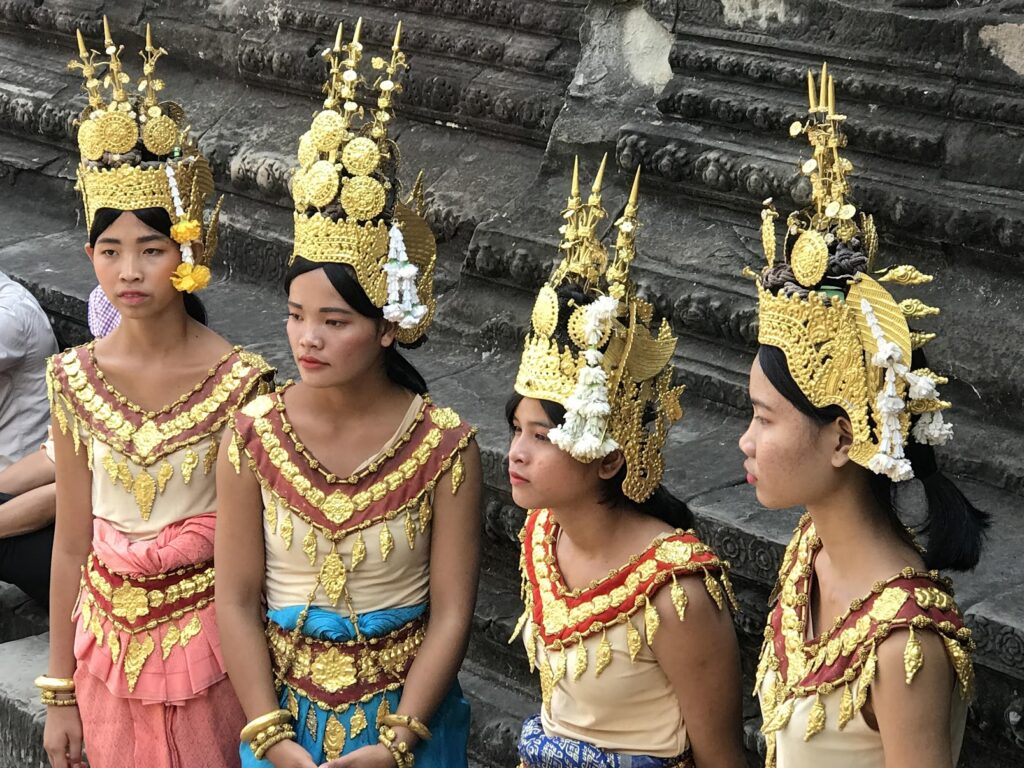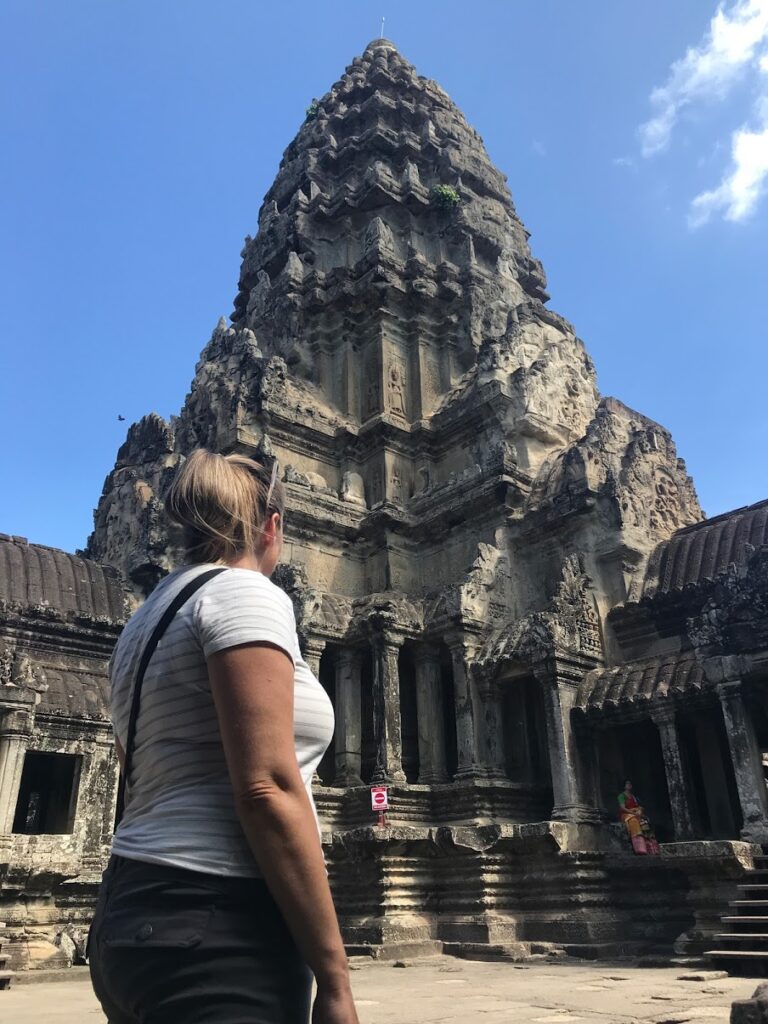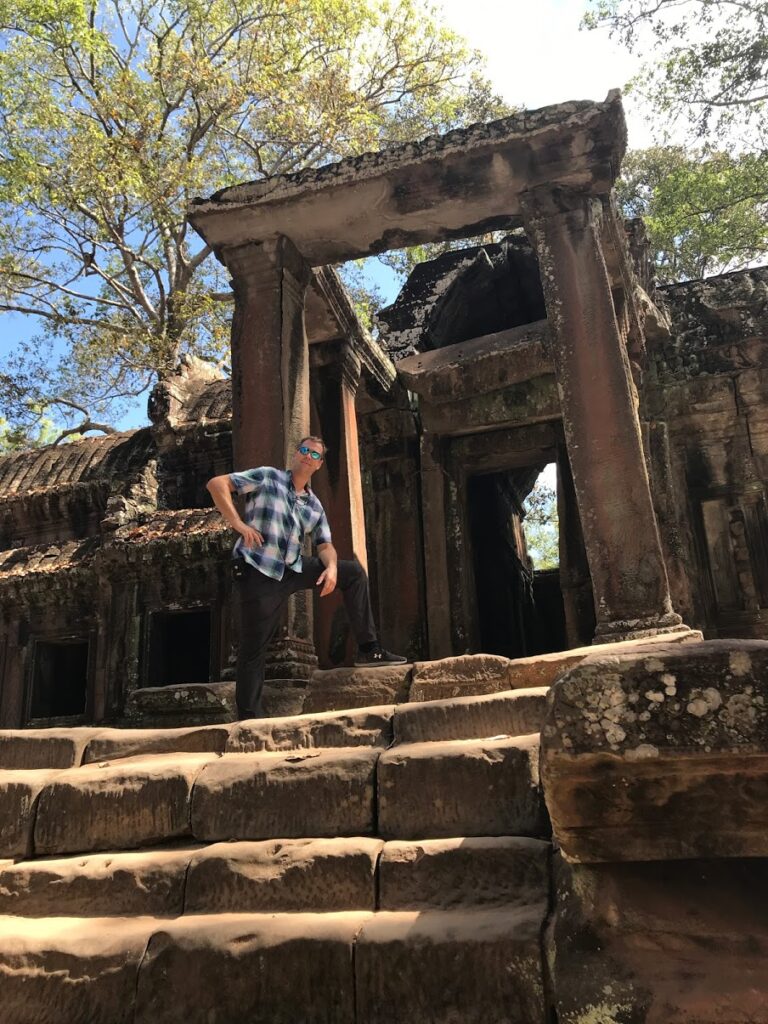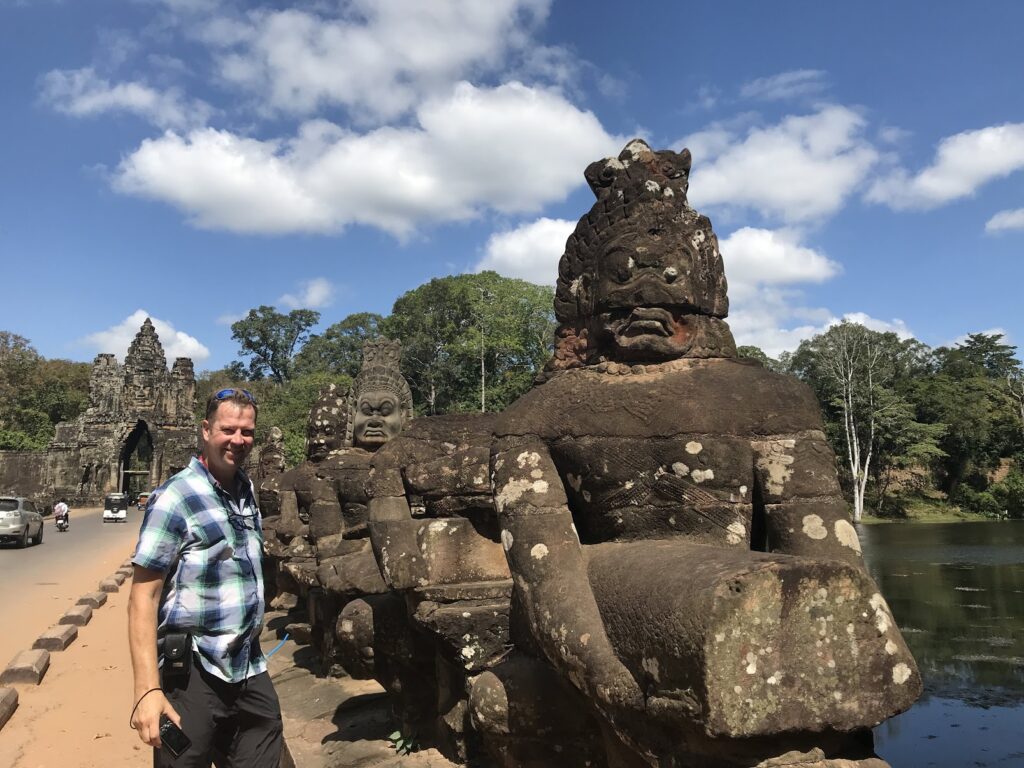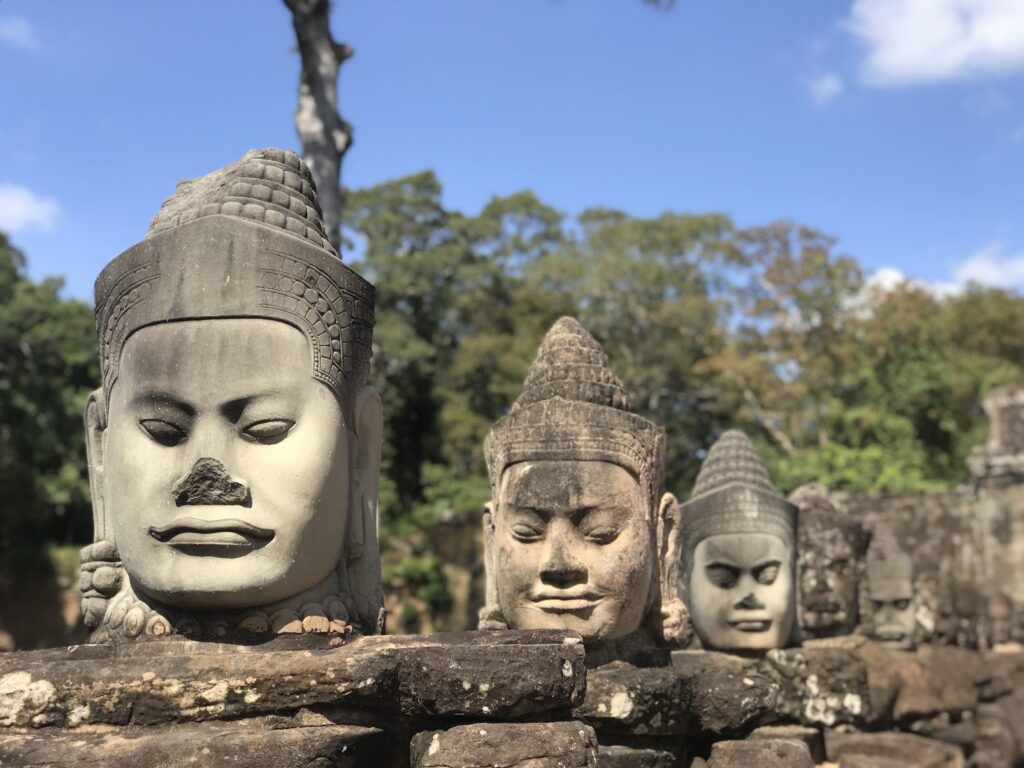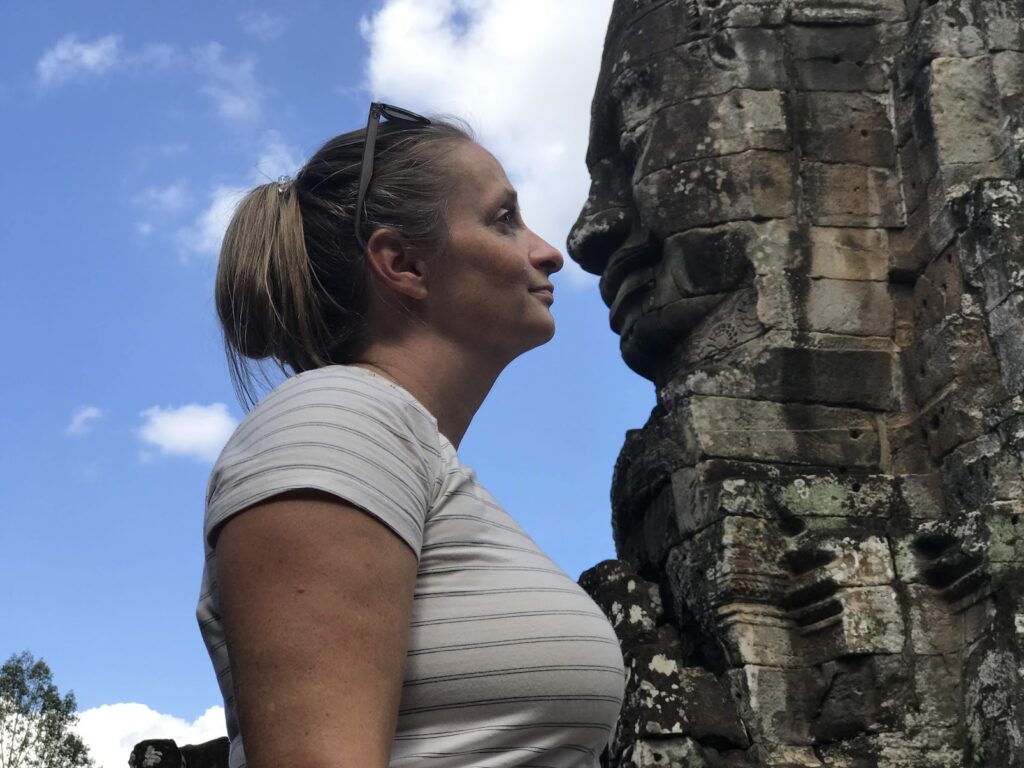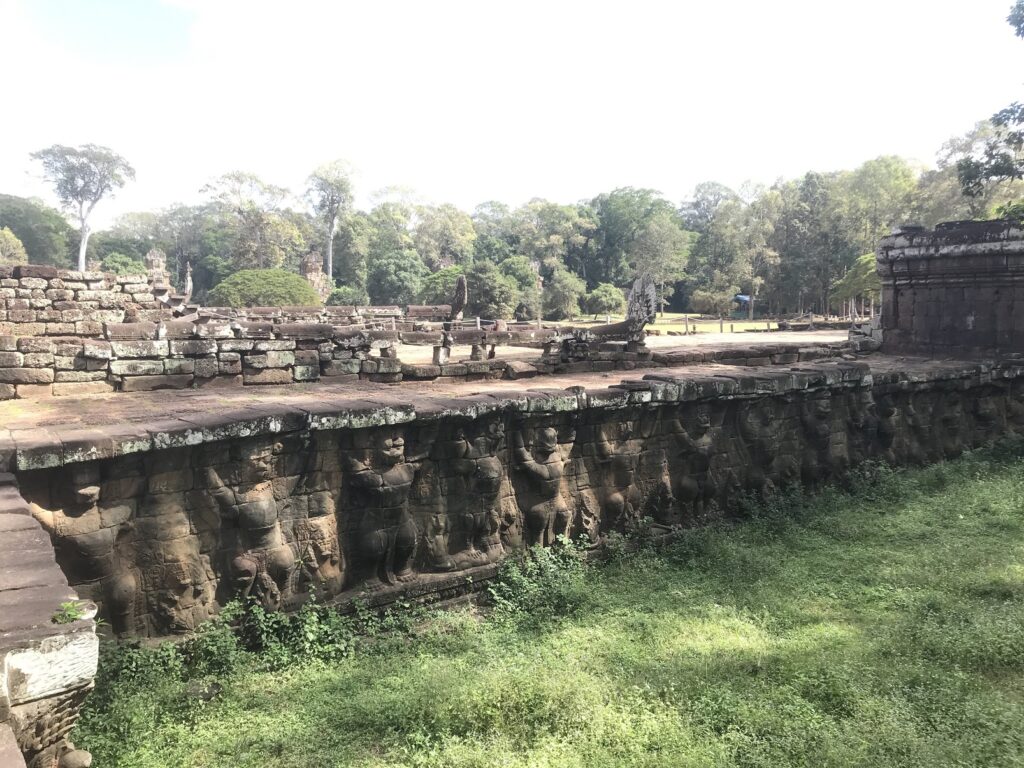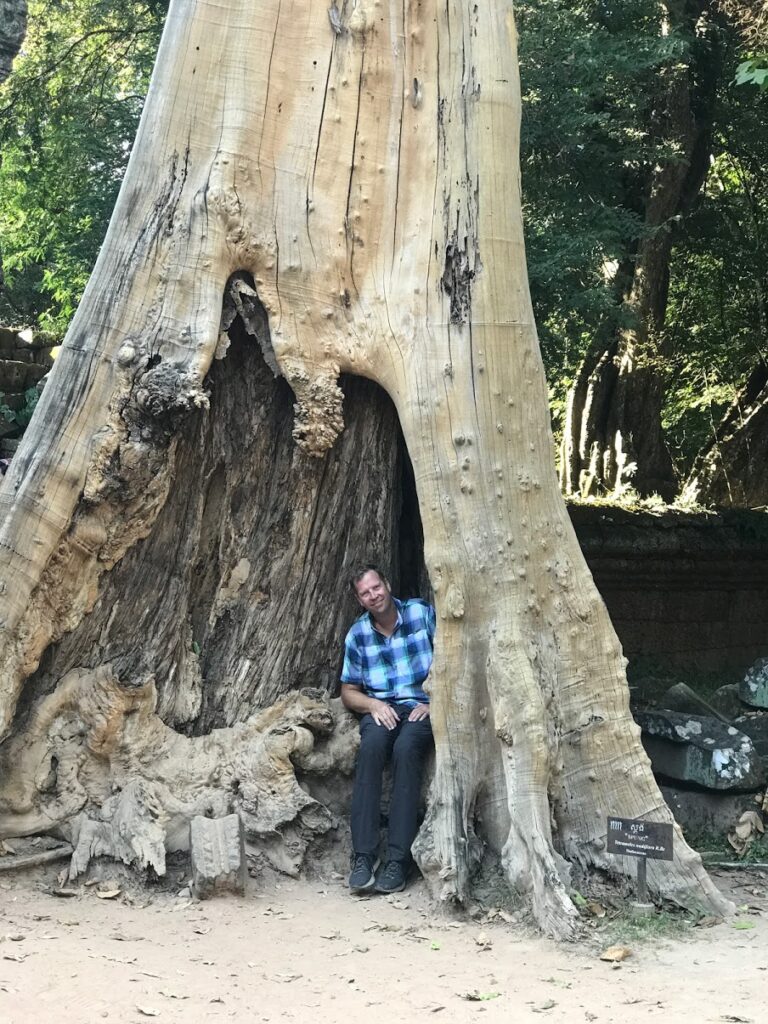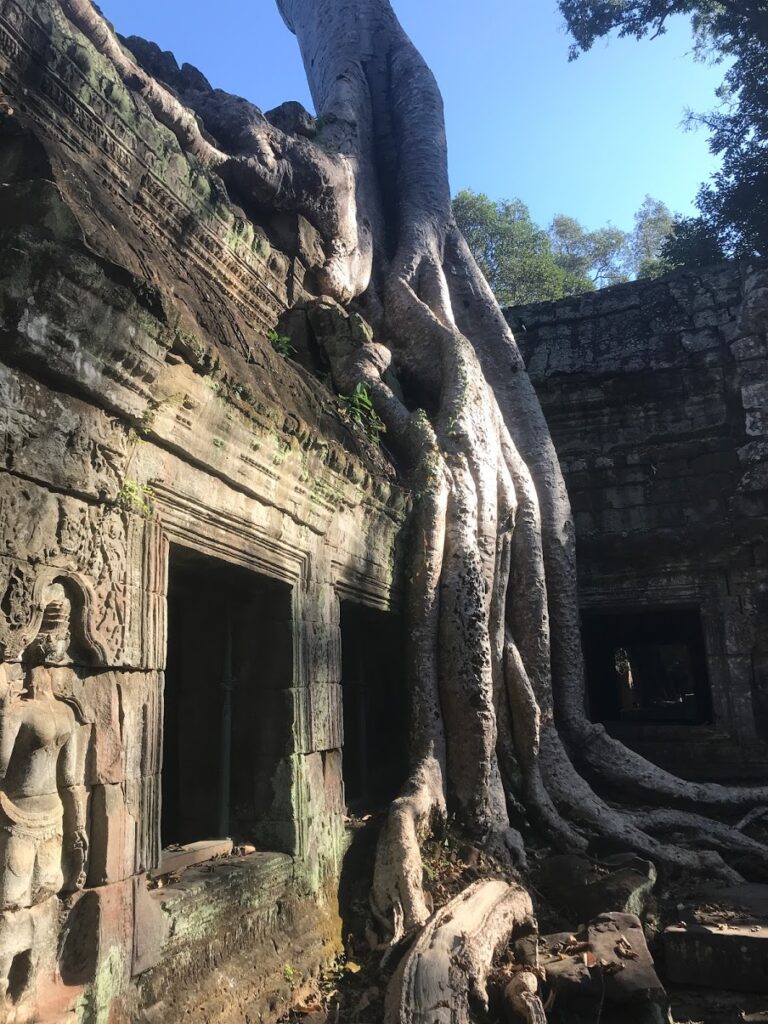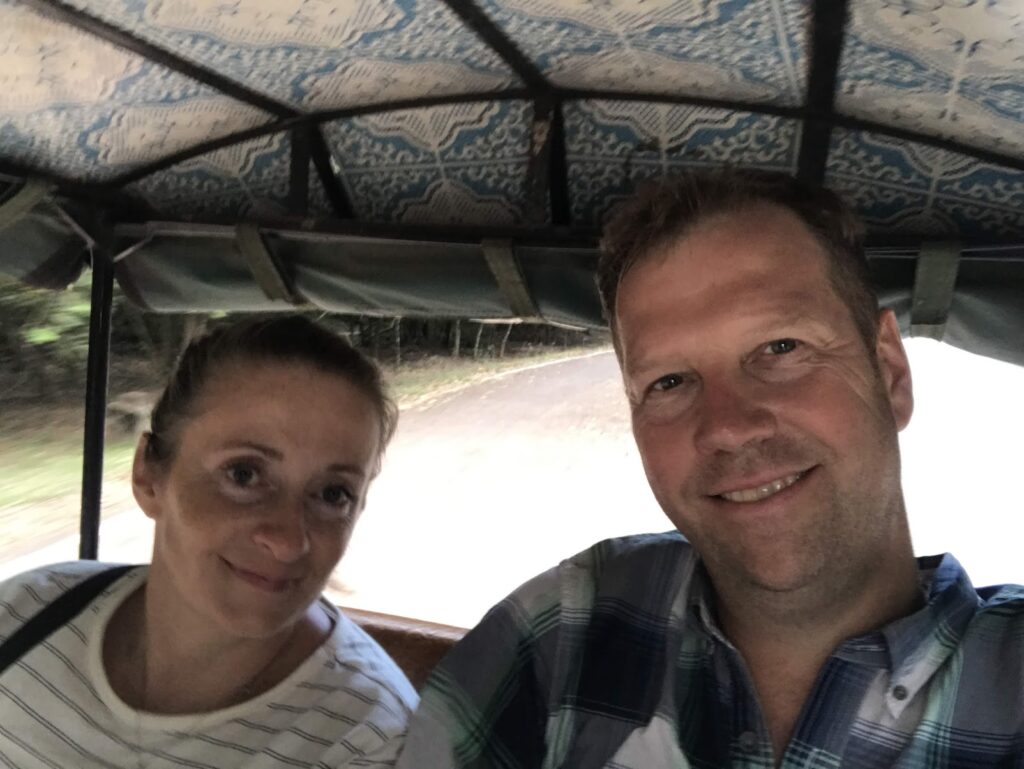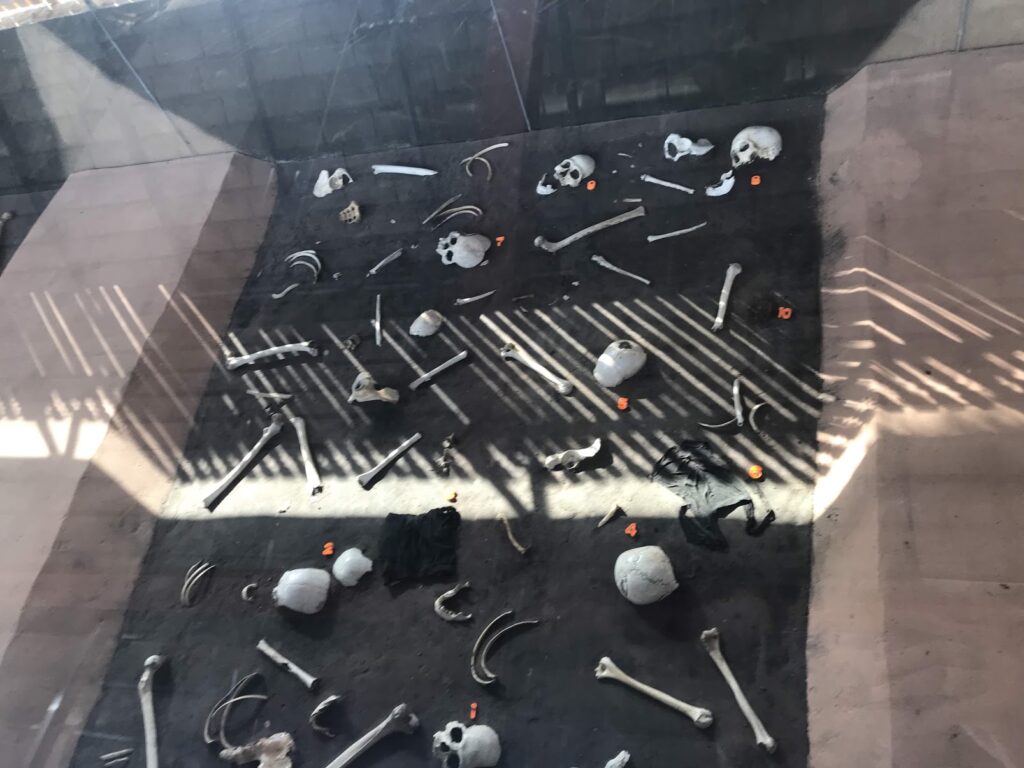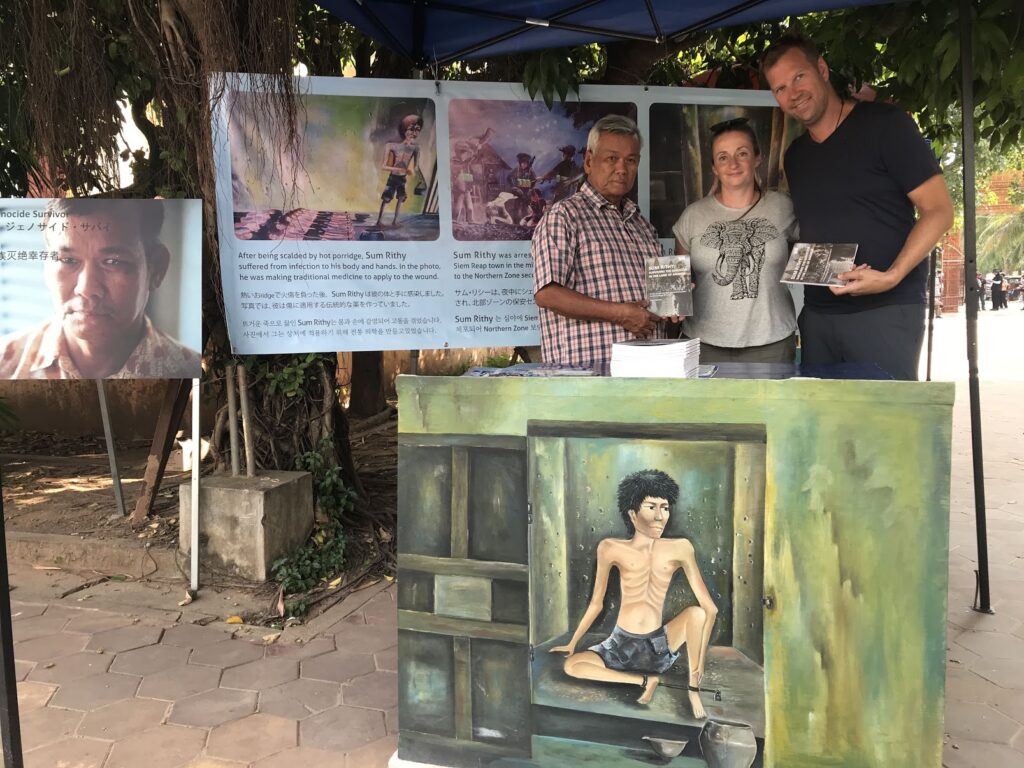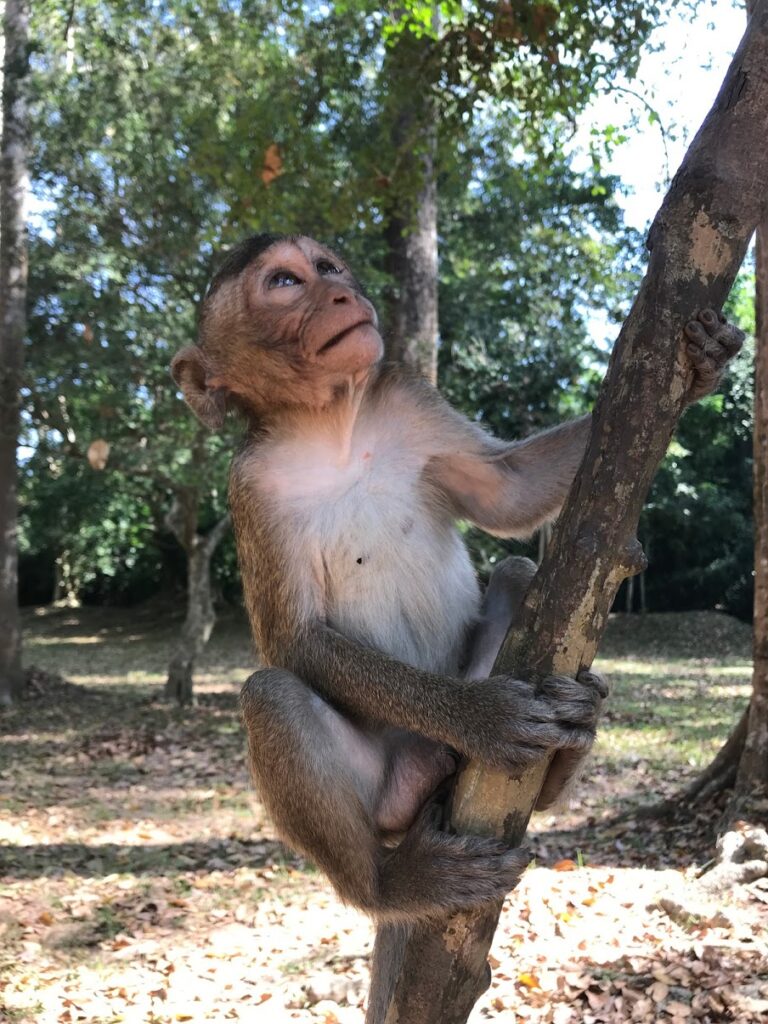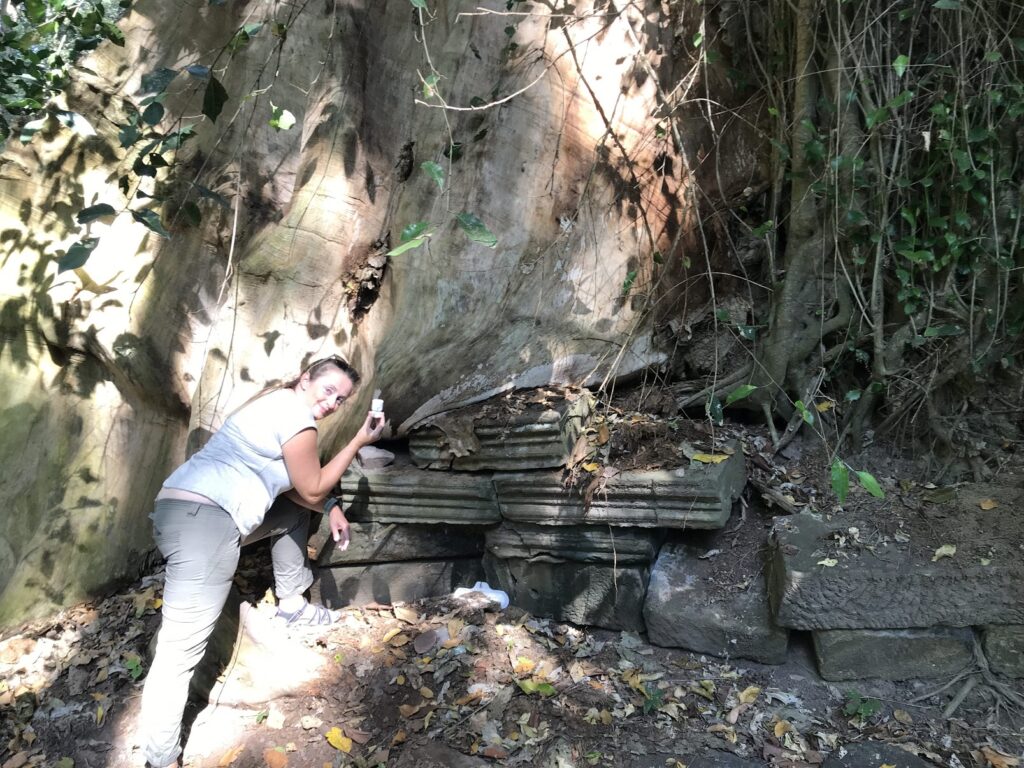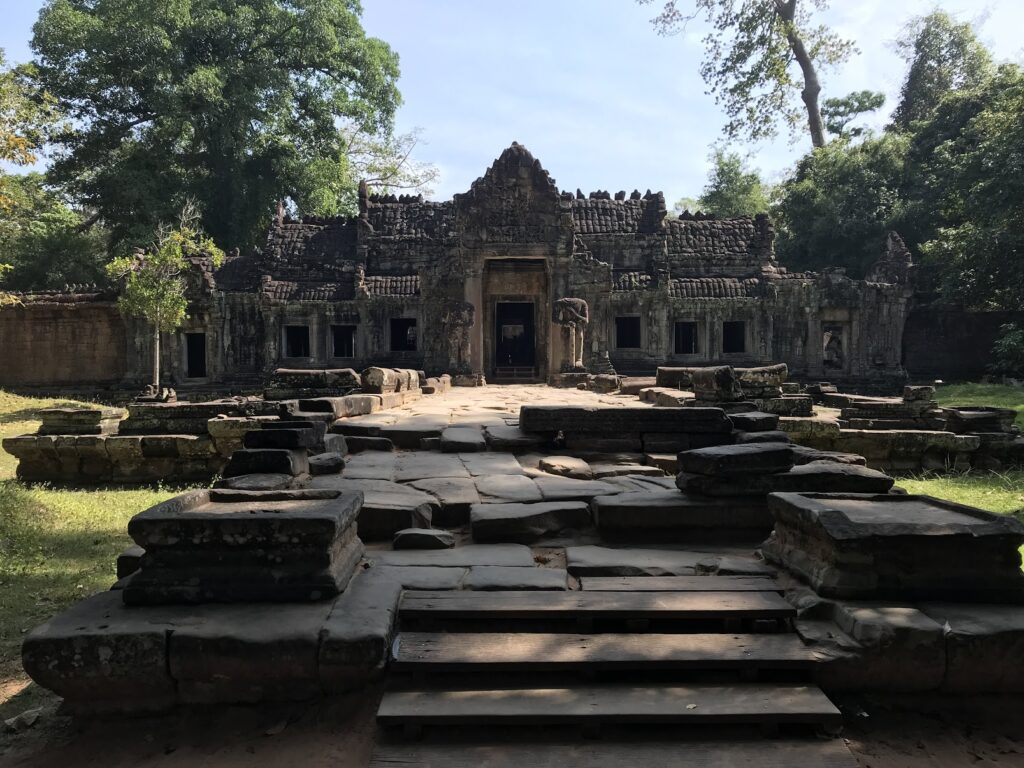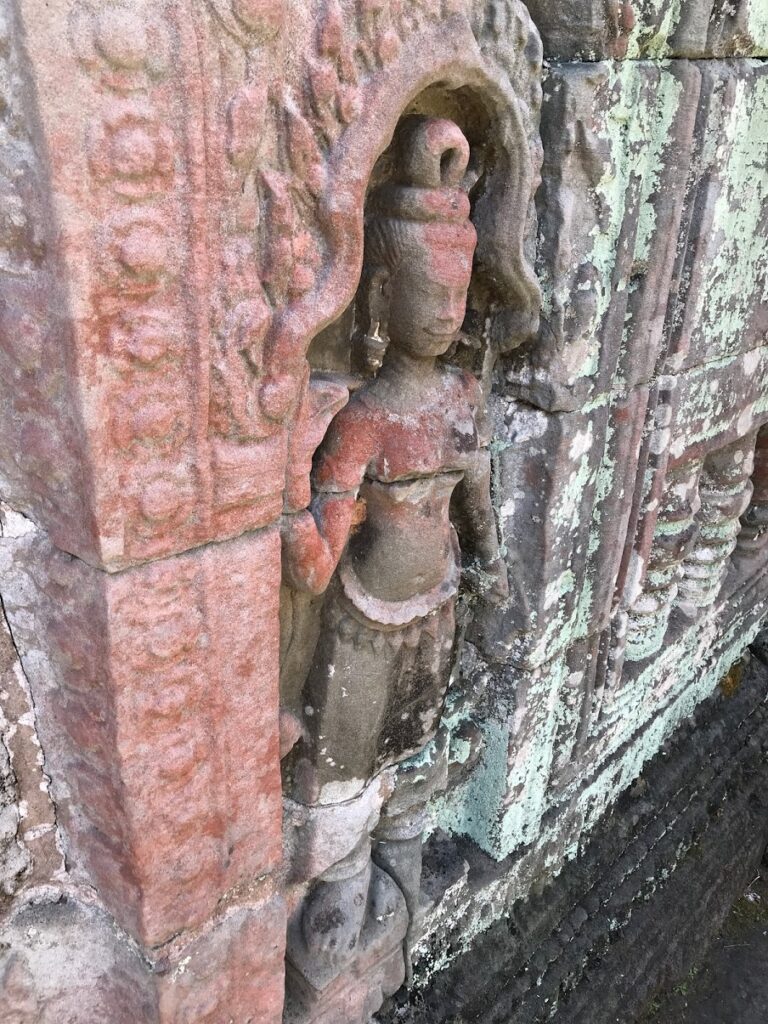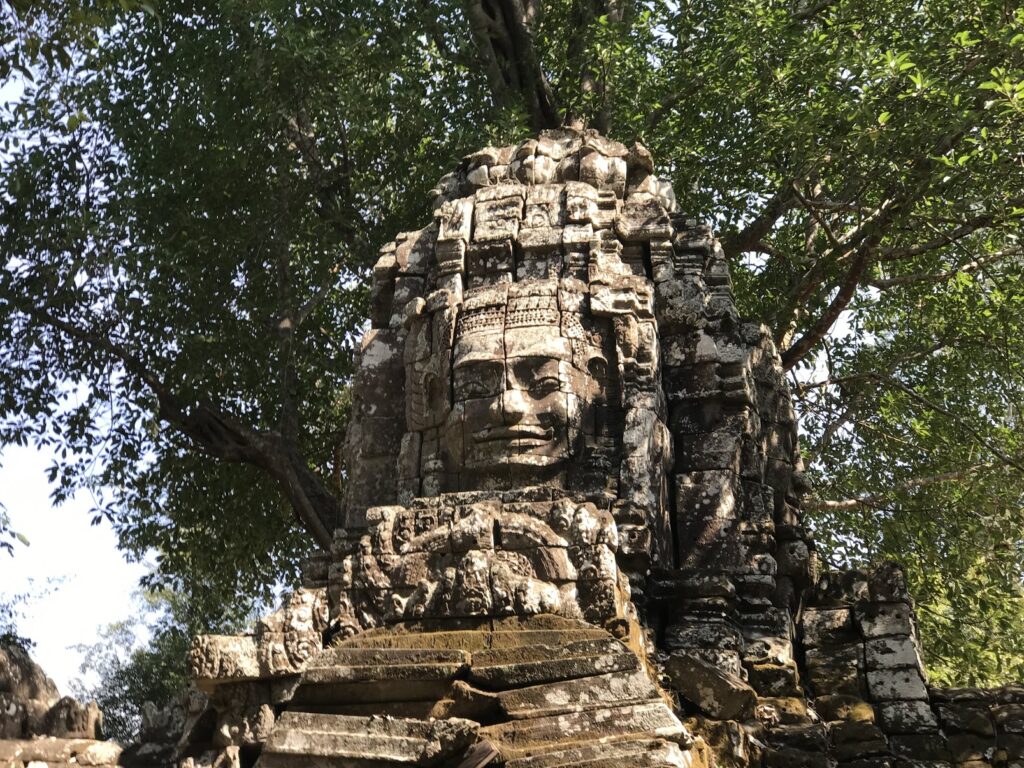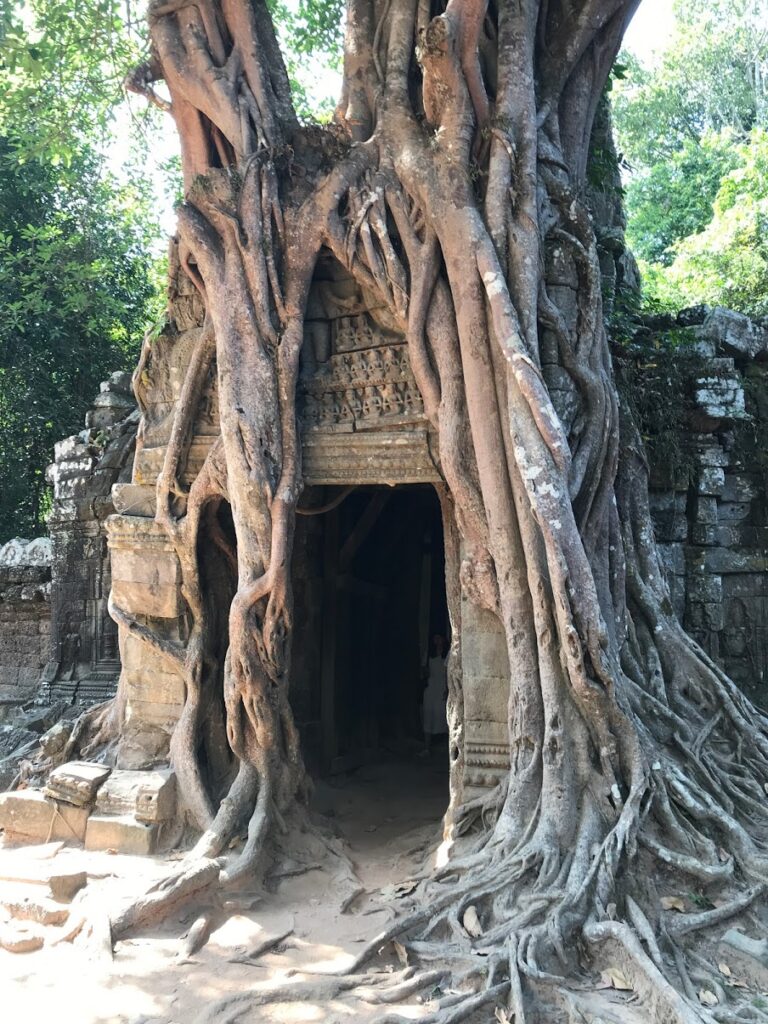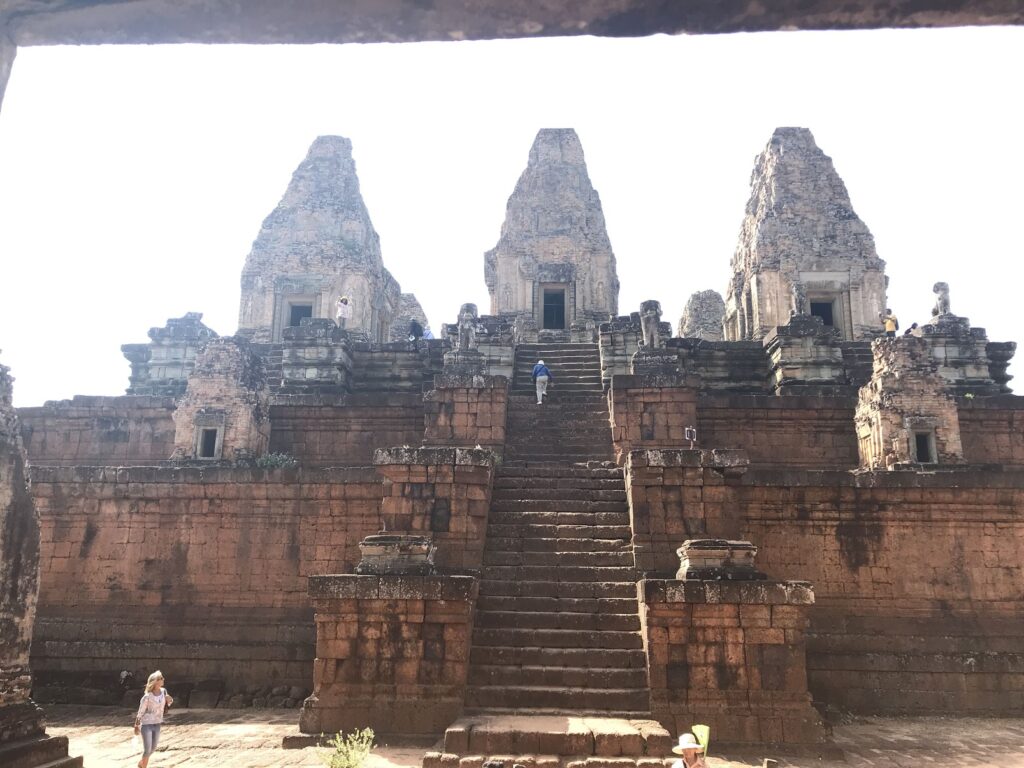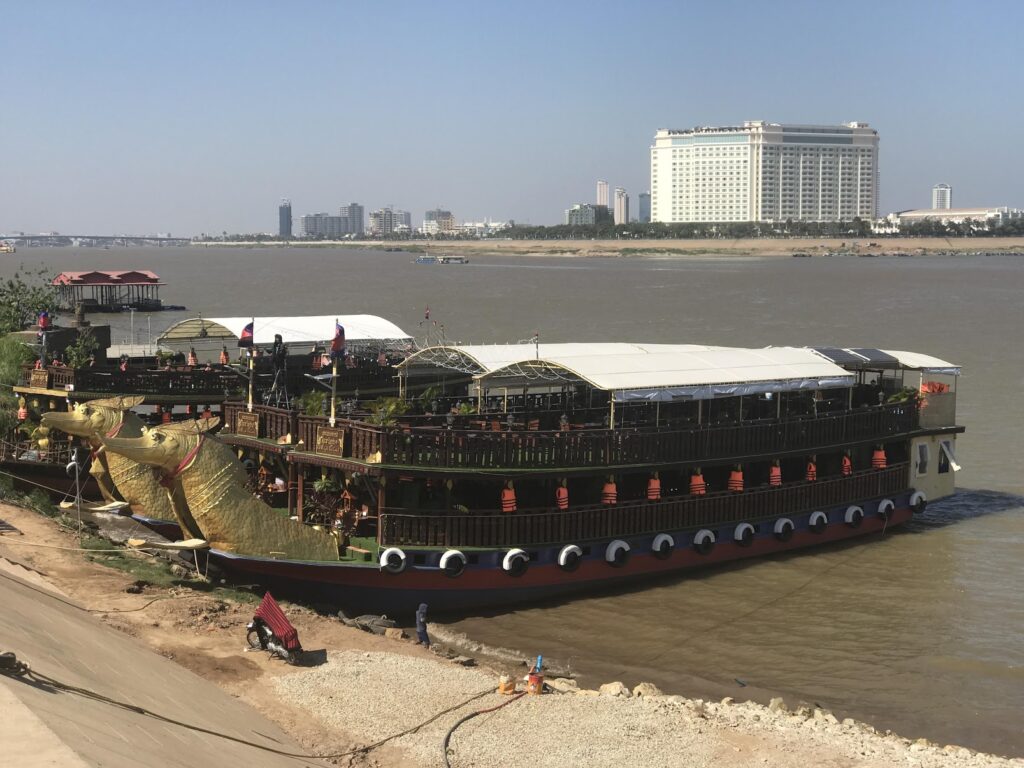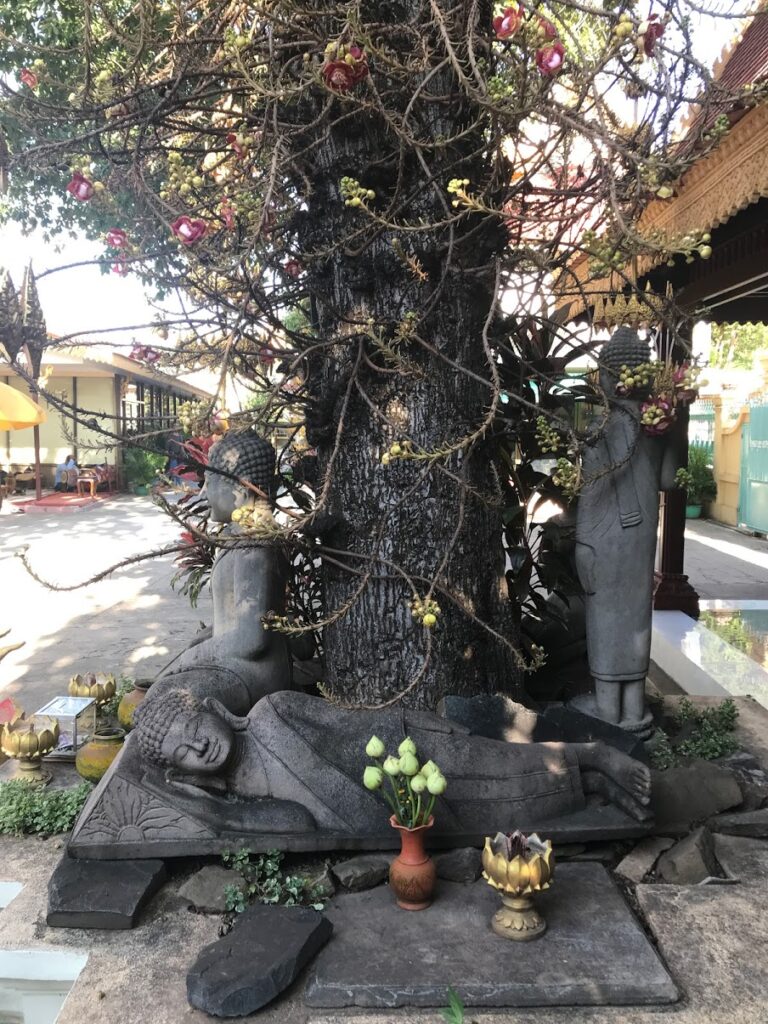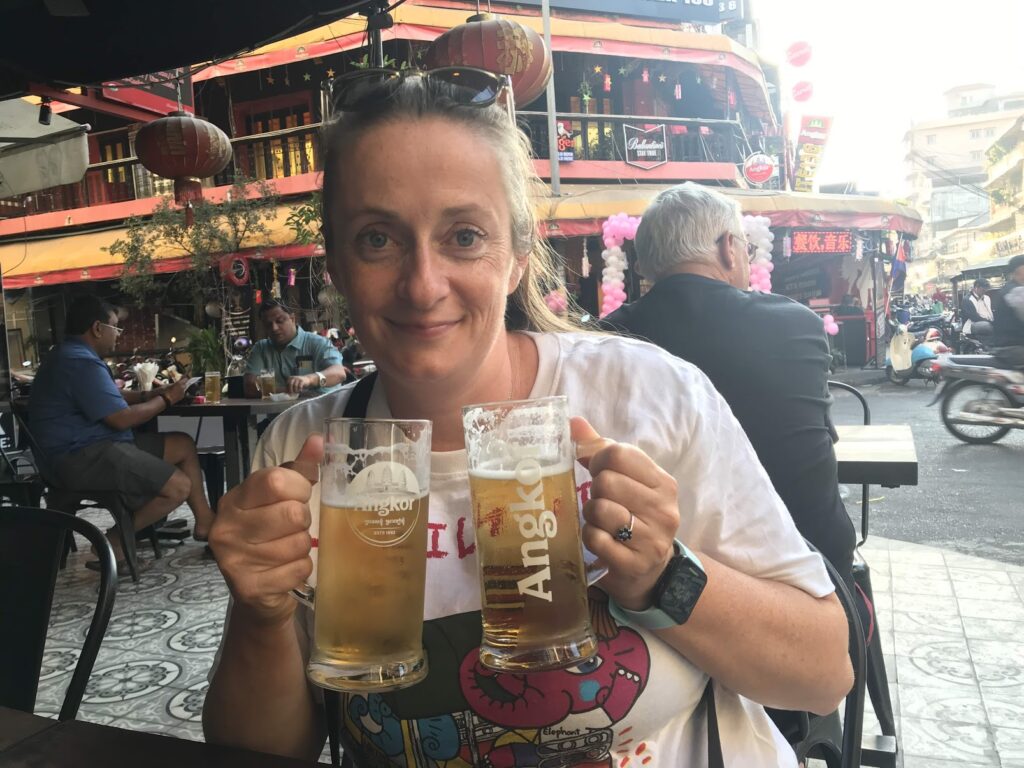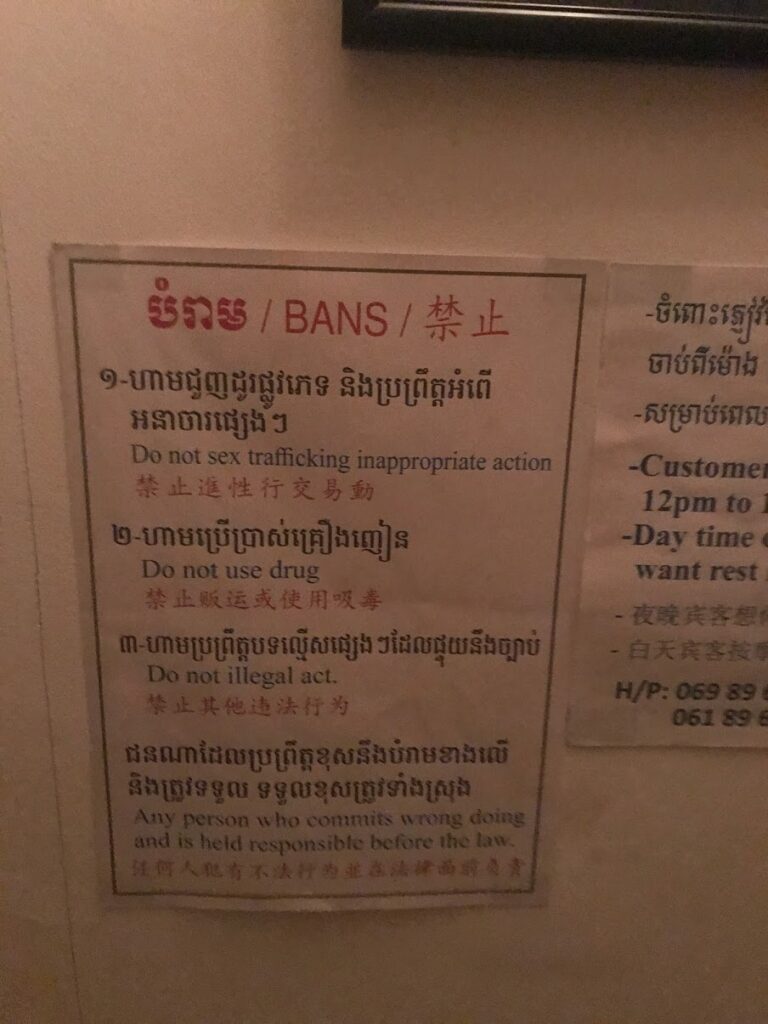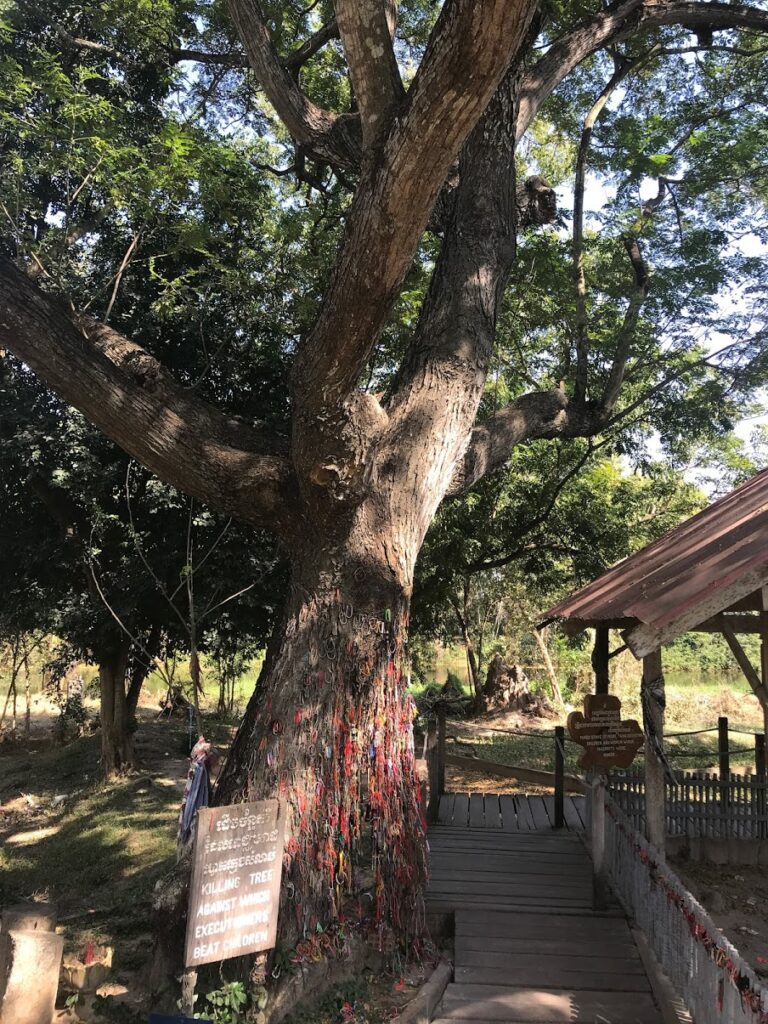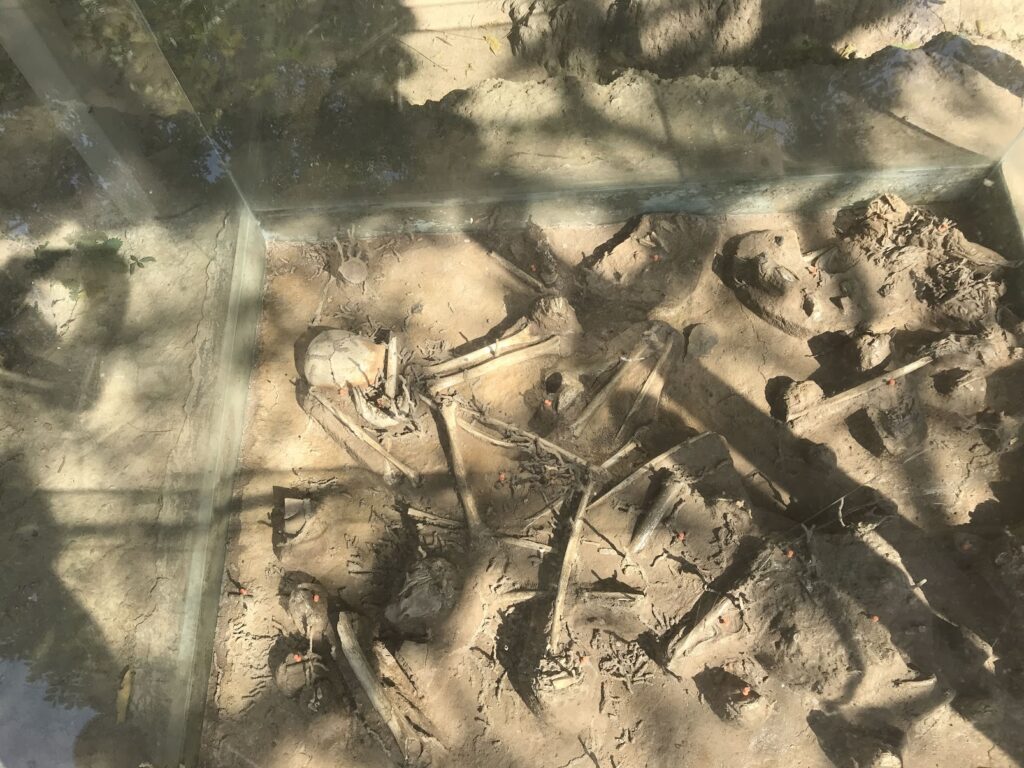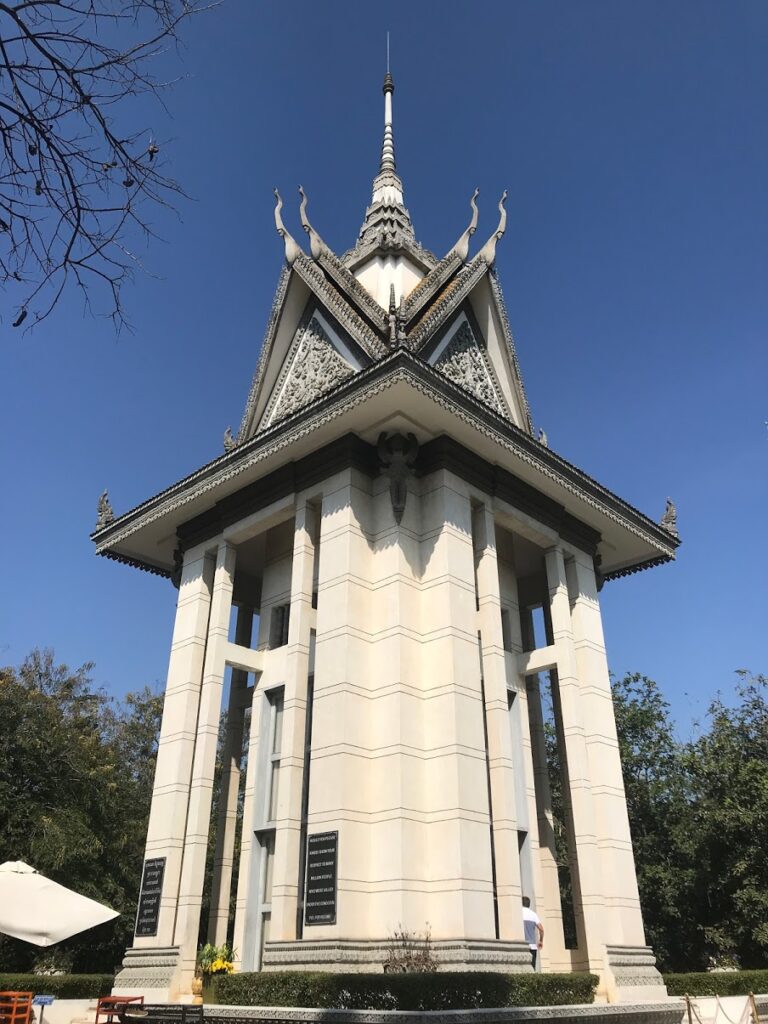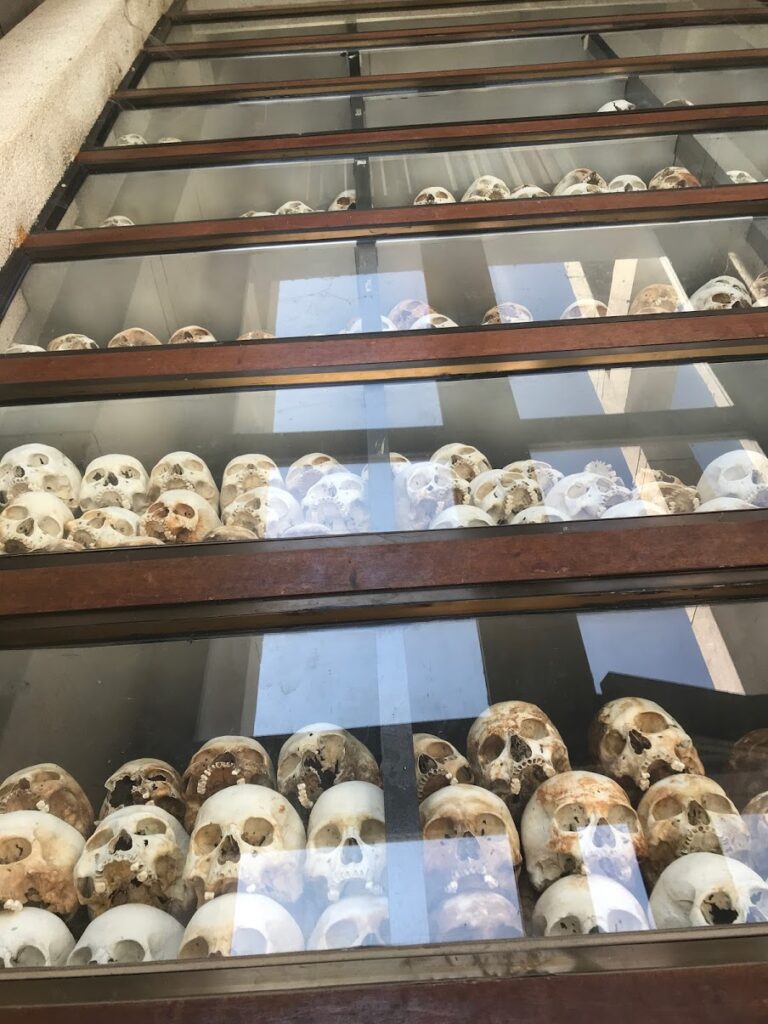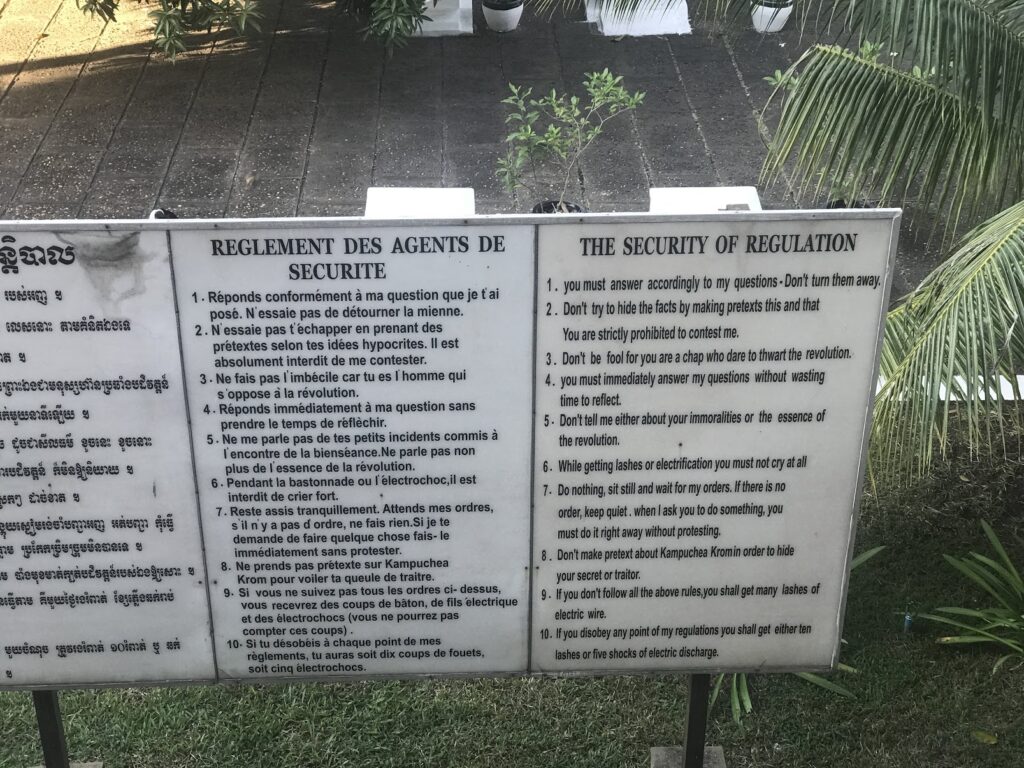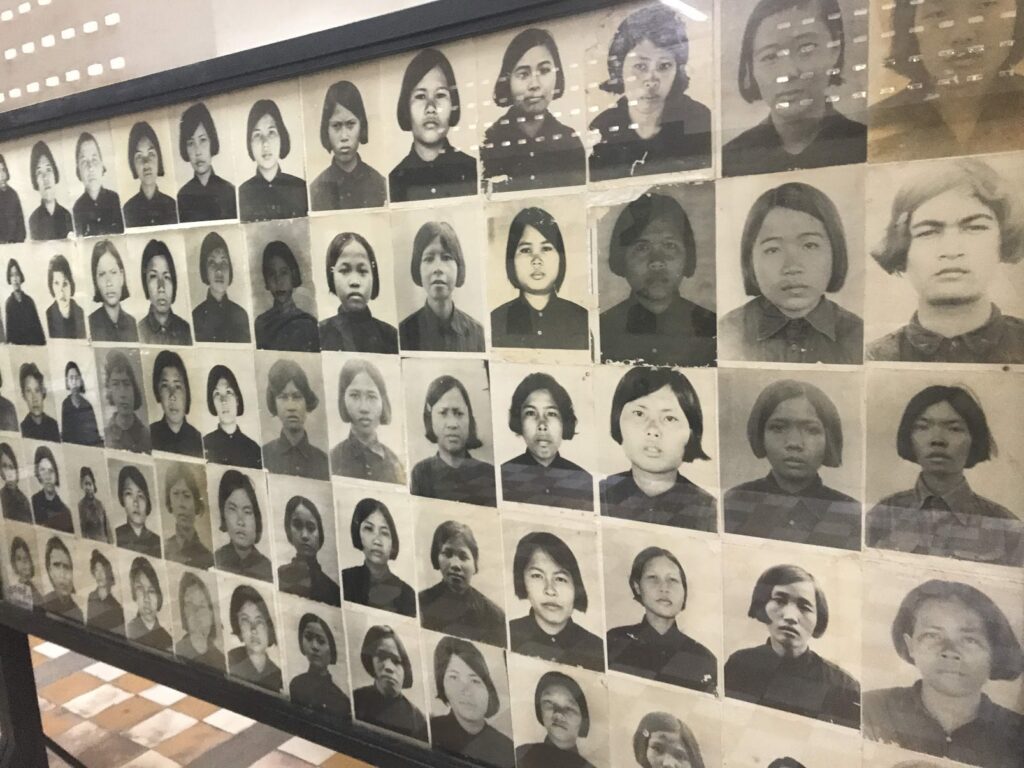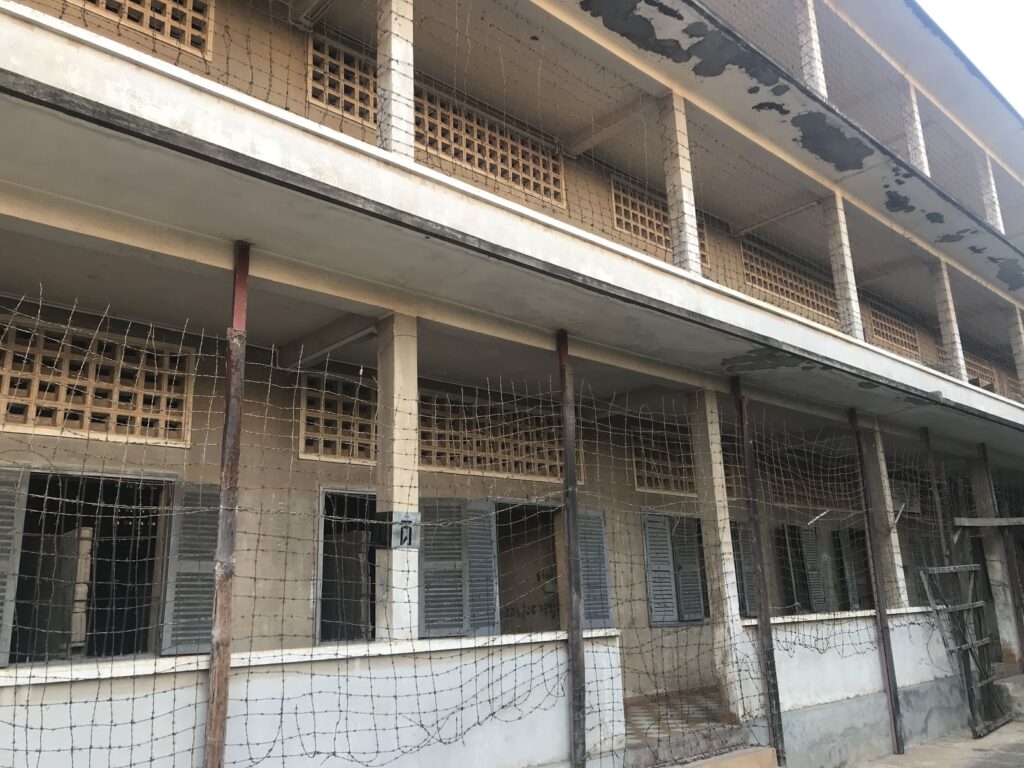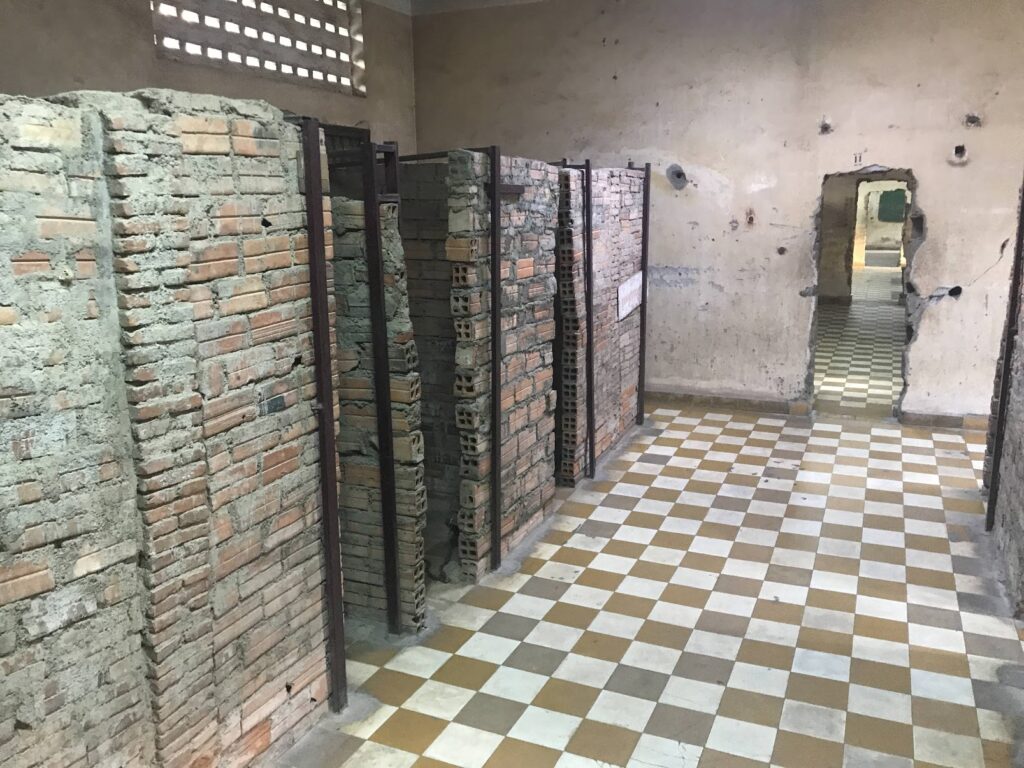If you recall, we had to book an onward ticket out of Thailand when we were at the airport in Mauritius. So, we took the bus which we booked from Bangkok to Siem Reap, Cambodia. The bus went from Bangkok to the border where the bus company took charge of getting us through customs. We had done an eVisa but if you didn’t you could do it all at the border upon arrival. The bus company would do the whole thing for you… for a fee obviously. A few people did it this way. There were some people on the bus who were just going into Cambodia (near the border) for the night to reset their time allowed in Thailand. After the border, we got back on the bus and headed to Siem Reap. The whole trip was about 7 hours.
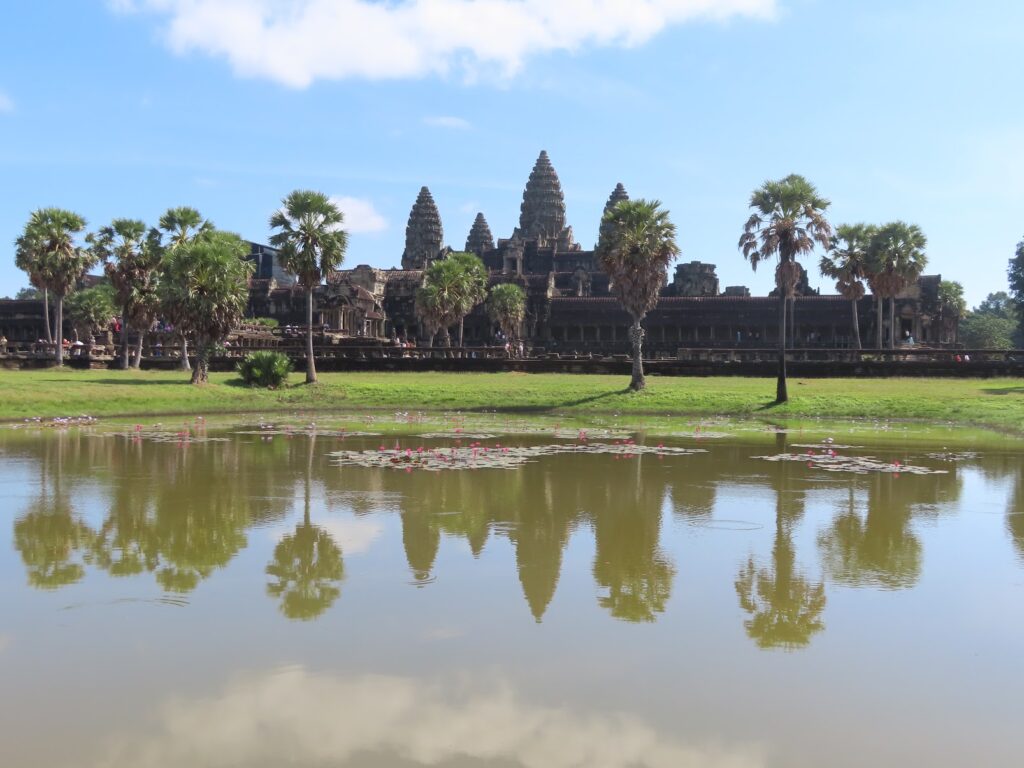
The thing to see in Siem Reap is Angkor Wat. It is a UNESCO World Heritage site and draws millions of visitors every year. A ticket for Angkor Wat is not cheap; it is about $31 USD for a one day pass (by the way, Cambodia mostly uses the US dollar) or $62 USD for a three day pass. So, we got a three day pass despite only going for two days. The pass is required not just for the main site but to get access to all of the temples all around this area. Angkor Wat is the city of temples (Angkor is the Khmer word for city and Wat means temple) and is a Hindu temple complex that is the largest religious monument in the world. The site itself is about 163 hectares (402 acres). It was originally constructed as a Hindu temple to the god Vishnu for the Khmer Empire but eventually changed into a Buddhist temple near the end of the 12th century. It was built by the Khmer King Suryavarman II and eventually became his mausoleum. It was completed by Jayavarman VII.
There are different ways to experience Angkor Wat. We chose to get a tuk tuk for the day… actually two days. On the first day we did the short route which is the one that would take us to the main temple at Angkor Wat plus about four or five other temples. One of these is the Tomb Raider temple, so called because it was used in the filming of the movie Tomb Raider. The short, or central, route is called this because it travels a shorter distance although it takes about the same amount of time for the day. The tuk tuk cost $15 USD for the day. The driver just sat on his tuk tuk during the day waiting for us while we went into the temples. The total distance for the day was about 19 km.
On the second day, we went past Angkor Wat but kept going quite a bit further. For the day the grand circuit cost $18 USD for the tuk tuk. We went to another 5 temples during the day but we were done pretty early. So, on the way back we went to one of the killing fields in Siem Reap. We got a guide to give us a bit of tour and paid him a tip of $5 USD. We met a man who had been imprisoned here and had written a book. We bought a copy of his book for $10 USD.
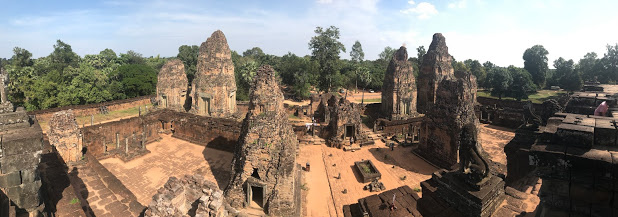
Siem Reap was a pretty cheap place to visit. However, we booked a 4 star hotel called the Diamond D’Angkor which was about $40 CAD per night including a great breakfast. I got a massage across the street from the hotel for about $8 USD but it was not the nicest setting. Happy Hour beer was always available and cost 50 cents per glass. We had multiple inexpensive meals while we were there. Away from the main tourist areas, a meal was between $2 and $3 USD. On Pub Street, it was quite a bit more expensive; we paid about $15 CAD for the two of us including a couple of beers. The vibe on Pub Street was much more lively though. We also wandered around a night market where Nic bought a t-shirt for $2 USD; later we saw the same one for $1 USD. She can be so frivolous sometimes 😉

From Siem Reap, we took another bus to Phnom Penh, the capital of Cambodia. The bus ride took about 6 hours. Our hostel had a nice pool and bar area although the smokers can really ruin it for the non-smokers. Happy Hour beer here was $1 USD per glass. We ate at the restaurant at the hostel a few times and it was always pretty good. Phnom Penh is a bit more expensive than Siem Reap. A massage in Phnom Penh was about $10 USD and I had to fend off the offers of a happy ending.
We got a tuk tuk for a day to take us to the Killing Fields and to S21 Tuol Sleng Prison. It might have made more sense to go in the other order. S21 was a former school that was turned into a prison by the Khmer Rouge. The Khmer Rouge, led by Pol Pot, had a vision of a completely communist agrarian society. Educated people were seen as a threat to this vision. Therefore, they gathered and imprisoned teachers, doctors, lawyers, and anyone who had an education. They accused them of being CIA spies and tortured them until many of them just relented and confessed to crimes they never committed. The Khmer Rouge drove the other people out of the cities like Phnom Penh to work on farms, rice fields and fishing. In S21, the educated people were imprisoned and tortured. After being held here, they were transported by truck to the site of the killing fields. This was a former Chinese cemetery. They were killed in brutal ways. Bullets were too expensive so they were mostly killed by slitting their throats or hacking them with crude tools. Many women and children were also killed because they were unable to work on the farms. The Killing Fields is now the site of the Choeung Ek Genocidal Center.
The Khmer Rouge, also known as the Communist Party of Kampuchea (CPK), was a term given to them to reflect their communist ideology. Many of the leaders had been educated in France and joined a communist party while over there. Marshal Lon Nol, the former Prime Minister, along with pro-American allies, staged a coup to take control from Prince Sihanouk. When the eventual CPK leaders returned to Cambodia, they started a rebellion against the leadership of Marshal Lon Nol. Aided by North Vietnamese soldiers in the jungles of Cambodia, the CPK began to defeat the army of Marshal Lon Nol. In 1975, the CPK took full control of Cambodia. The world did not really know what was happening in Cambodia. The Vietnamese invaded and took control of Cambodia in 1978. Despite being responsible for one of the worst human tragedies of the 20th century, the Khmer Rouge continued to be recognized as the legitimate government of Cambodia until 1999. Pol Pot was arrested in 1997 and some of his leadership were in exile and not arrested until 2007.
It was a short stay in Phnom Penh. From here we were off to Ho Chi Minh and almost three weeks in Vietnam.
